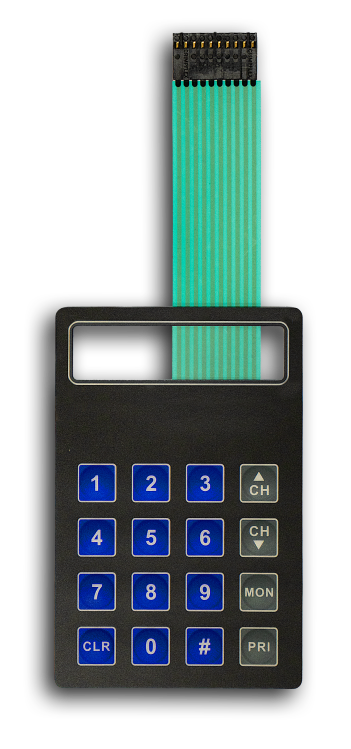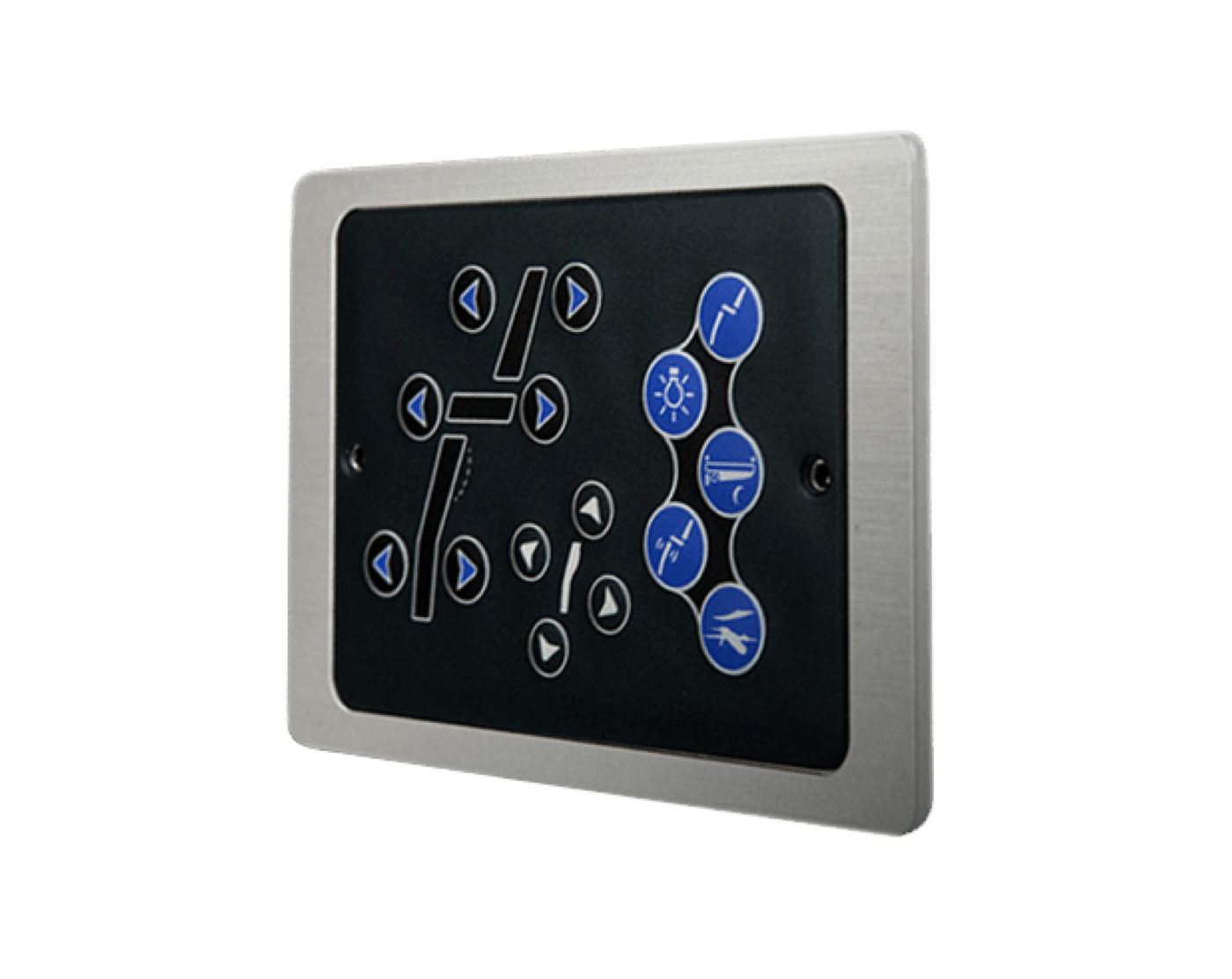The Role of Membrane Switches in Enhancing Product Aesthetics
The Role of Membrane Switches in Enhancing Product Aesthetics
Blog Article
Understanding the Relevance of Membrane Switches in User Interfaces
Membrane buttons are important components in the style of reliable user interfaces, promoting not only functionality but likewise improving visual charm and individual interaction. Their unique attributes, such as resistance to personalized styles and ecological variables, make them ideal for a varied array of applications throughout numerous sectors. As we check out the future trends and numerous advantages related to Membrane innovation, it comes to be clear that these switches are greater than simply parts; they stand for a convergence of innovation and practicality. The implications of this innovation on individual experience deserve analyzing further.
What Are Membrane Switches?

The spacer layer, which contains glue properties, enables for the separation of the circuit layer from the overlay, ensuring that the button continues to be in a non-activated state up until pressed. When pressure is related to the overlay, it presses the spacer layer, bridging the gap and finishing the circuit in the underlying layer. This design not only lowers the physical area required for traditional mechanical switches but additionally enhances the resilience of the gadget, as Membrane buttons are normally resistant to dirt, wetness, and various other environmental factors.
Commonly discovered in applications varying from consumer electronic devices to medical tools, Membrane buttons are integral to modern innovation, providing a straightforward and effective interface that aligns with modern design demands.
Benefits of Membrane Switches
While many switch innovations exist, Membrane Switches offer distinctive advantages that make them specifically desirable in various applications. Among the main advantages of Membrane buttons is their small layout, which permits space-saving executions in devices where realty is limited. Their thin account not only improves aesthetic allure but likewise promotes lightweight building and construction.
An additional significant advantage is their resistance to environmental factors. Membrane switches are usually secured against moisture, dirt, and impurities, making them ideal for use popular atmospheres, such as medical tools and industrial devices. This longevity extends the life-span of the button, minimizing upkeep prices and boosting reliability.
Furthermore, Membrane buttons can be customized to meet particular style demands, including one-of-a-kind graphics and shades that boost customer communication. Their responsive responses alternatives can additionally be tailored to supply a gratifying customer experience. Furthermore, Membrane switches are economical, specifically in high-volume applications, as they can be created effectively.
Applications in Various Industries

In the customer electronic devices market, Membrane buttons are common in devices such as microwaves, washing machines, and remote controls. Their tactile comments and visual options enhance user experience while offering a streamlined, contemporary look. In addition, automobile manufacturers utilize Membrane buttons in control panel controls and infomercial systems, where space is limited, and user engagement is critical.
Additionally, the industrial market leverages Membrane switches in control panels for machinery and tools, permitting for instinctive procedure in often severe environments. Their resistance to chemicals and wetness ensures durability and integrity in these applications. In general, the flexibility of Membrane Switches contributes dramatically to their widespread usage, making them vital in different technical domains.
Design Factors To Consider for Membrane Switches

When designing Membrane buttons, numerous essential considerations have to be taken into account to ensure ideal functionality and user experience. The choice of products is critical; choosing long lasting, high-grade substratums can boost the button's long life and resistance to ecological aspects such as dampness and temperature changes.
Second of all, the layout of the visuals overlay ought to prioritize clarity and convenience of usage. Icons and text must be legible, and the design needs to help with intuitive communication (membrane switches). In addition, responsive responses is necessary; integrating a tactile dome or other mechanisms can boost the individual experience by supplying physical verification of activation
One more essential factor is the button's electrical performance. Developers must ensure that the conductive traces are effectively created to reduce resistance and avoid signal disturbance. This involves analyzing the required actuation pressure and ensuring compatibility with the digital parts they will explanation user interface with.

Future Patterns in Membrane Innovation
As modern technology remains to advance, Membrane buttons are poised to progress significantly, driven by technologies in materials and making techniques. One arising fad is the consolidation of innovative materials, such as conductive inks special info and versatile substratums, which boost resilience and minimize the overall weight of Membrane switches. These products not just improve the tactile action but also enable the layout of switches that can endure harsher ecological conditions.
Furthermore, the assimilation of touch-sensitive innovations is transforming traditional Membrane Switches into even more interactive interface. Capacitive touch sensing units embedded within Membrane button panels can provide a much more responsive and instinctive individual experience, lining up with the expanding need for smooth, modern-day layouts in customer electronic devices.
Additionally, advancements in printing techniques, such as digital and 3D printing, allow rapid prototyping and personalization of Membrane switches. This versatility allows makers to react faster to market needs and customer preferences.
Finally, sustainability is coming to be a significant focus, with producers checking out environmentally friendly materials and processes. As these patterns unfold, the future of Membrane modern technology assures boosted performance, aesthetic appeal, and environmental duty, strengthening their function in advanced interface throughout numerous markets.
Conclusion
In final thought, Membrane Switches stand for an important part in the design of customer interfaces, combining performance with aesthetic versatility. As innovations in innovation proceed, the evolution of Membrane switches is anticipated to further fine-tune customer interfaces, driving development and enhancing usability in a progressively intricate technological landscape.
Membrane buttons are indispensable components in the style of reliable user interfaces, helping with not just capability but likewise boosting visual allure and customer communication.Membrane Switches offer as a vital element in different customer interfaces, Recommended Reading promoting a smooth communication in between customers and digital devices.While various button modern technologies exist, Membrane Switches offer distinct benefits that make them specifically preferable in various applications.Moreover, Membrane buttons can be tailored to satisfy details style needs, integrating special graphics and shades that enhance user interaction.In verdict, Membrane Switches stand for an essential element in the layout of customer interfaces, integrating performance with visual versatility.
Report this page